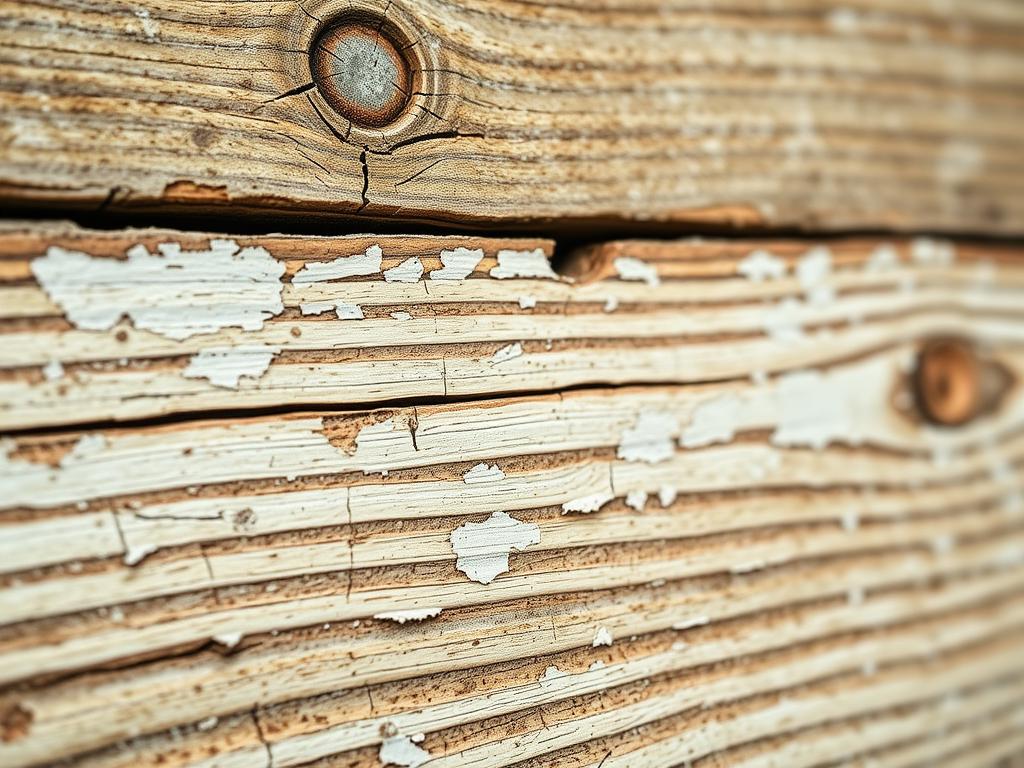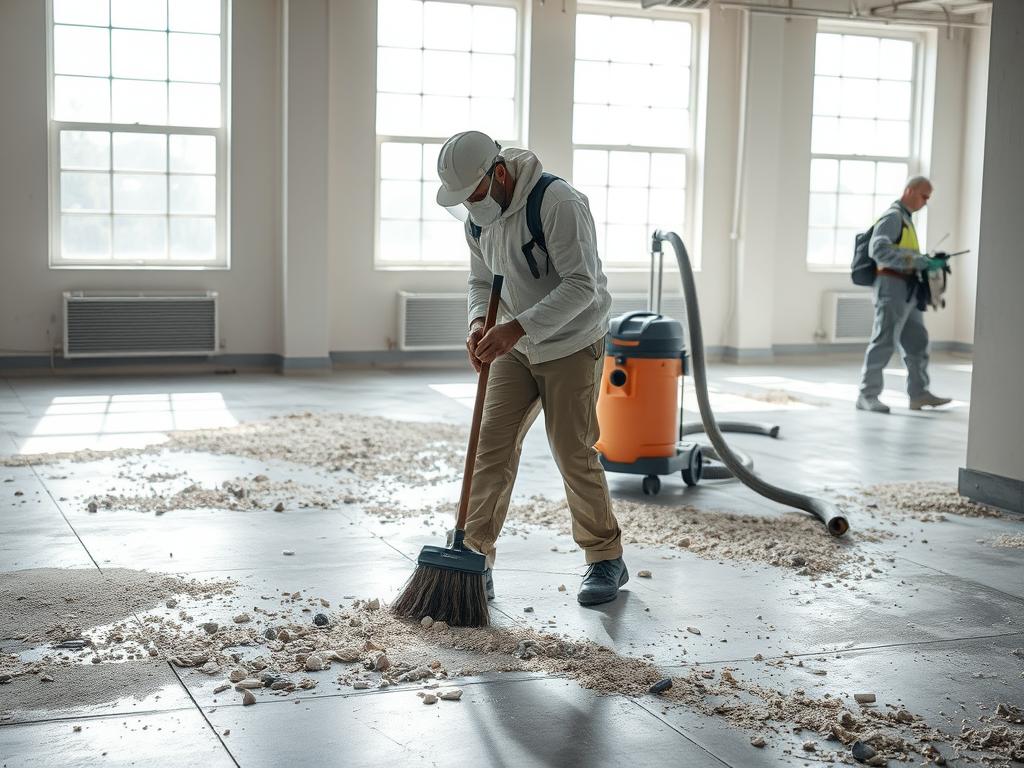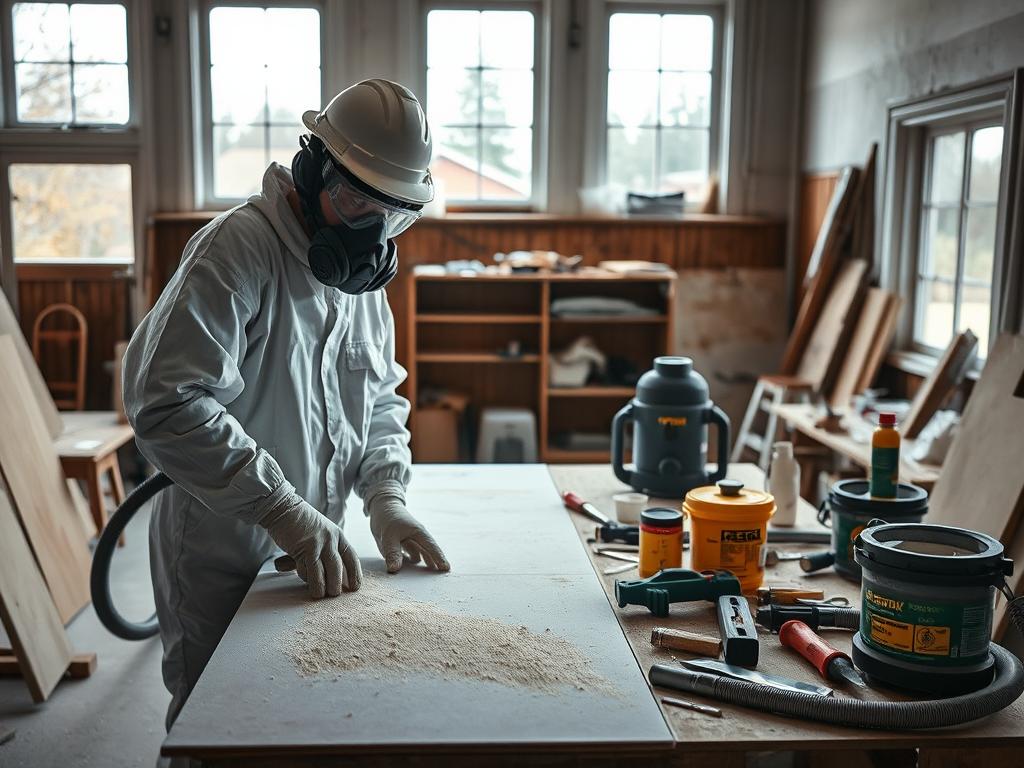When old meets new, hidden dangers can appear. Lead dust, hidden under old paint, is a big risk. It’s found during renovations and can harm people’s health.
Contractors play a big role in keeping people safe. They must follow lead-safe work practices. This is key to avoiding construction risks from lead.
The EPA guidelines are strict. They aim to keep people safe from lead, mainly in old buildings. Contractors are key in following these rules. They help protect the health of children and families.
Understanding Lead Dust and Its Risks
Lead dust is a big health risk in old buildings. This is because of the lead-based paint used before 1978. When workers sand or demolish, knowing about lead dust and its dangers is key to staying safe.
What is Lead Dust?
Lead dust is tiny and can float in the air. It’s made when lead paint is disturbed. This dust can settle on many surfaces, hiding dangers long after work is done.
Health Risks Associated with Lead Exposure
Lead dust can cause serious health implications of lead. Kids and adults can get sick from it. Kids might have delays in growing and brain problems. Adults could face high blood pressure, joint pain, and issues with having kids.
How Lead Dust Forms During Renovation
When you cut, demolish, or sand, lead dust is made. Without safety steps, lead dust hazards grow. This is true for jobs like fixing windows, doors, or tearing down walls with lead paint.
To stay safe, using lead-safe work methods is a must. These steps are not just safe; they’re also the law in many places. This shows why following rules to avoid lead dust hazards is so important.
Recognizing Homes with Lead Paint
In the world of real estate and home renovation, finding lead-based paint in old homes is very important. This is because lead can be harmful to our health. It’s key to know about these risks, mainly when we’re fixing up homes built before 1978.
Old homes often have lead paint because it was used a lot before 1978. People fixing up these homes need to watch out for lead paint. They also need to know about the dangers of lead in older homes.

- Homes built before 1978 likely have lead-based paints unless proven wrong.
- Chipping, cracking, or peeling paint means the lead paint is breaking down.
- Contractors can use EPA-approved kits to test for lead before they get certified.
Key Signs of Lead Paint Hazards
- Dust on surfaces like window sills and door frames might mean lead paint is wearing off.
- Areas like stairs, railings, and porches, which get a lot of use, need careful checks.
- High gloss paint in kitchens and bathrooms, where it gets wet and worn, should be checked for lead.
Importance of Assessing Lead Risk Before Renovation
- Checking for lead paint helps set up safe work areas to protect everyone.
- Knowing how much lead paint is in a home helps plan renovations and safety steps.
- Following lead-safe rules, like sealing off areas and using special filters, is needed when lead paint is found.
Getting lead right, whether by looking or testing, is vital for keeping people safe. It also helps follow federal rules on lead safety.
Federal Regulations on Lead in Renovation Work
In the United States, the EPA’s RRP Rule is key. It helps make renovation in older buildings safer. This rule applies to homes and schools built before 1978. It’s important for contractors to follow it.
Overview of the EPA’s Renovation, Repair and Painting Rule
The EPA’s RRP Rule is central to lead safety in renovations. It requires certified renovators for all work. They must be trained by the EPA to keep lead out of homes, which is good for everyone, but kids most of all.
Required Certifications for Contractors
Contractors need lead-safe certification to follow the EPA’s RRP Rule. This means they know how to work safely. They learn about containing dust, removing paint, and disposing of waste.
Penalties for Non-Compliance
Not following the EPA’s RRP Rule can lead to big penalties. It’s very important to follow the rules to keep everyone safe. Fines and business restrictions are possible if you don’t comply.
Best Practices for Lead Dust Management
Managing lead dust during renovations is key for worker safety and home safety. Using the right lead dust cleanup methods and safety steps is important. This keeps work areas safe and in line with rules.

Managing lead dust involves cleaning the work area well, using the right personal protective equipment (PPE), and setting up work area containment. These steps protect workers and make sure renovated homes are safe and clean for people to move back into.
Proper Cleanup Techniques
- Use High-Efficiency Particulate Air (HEPA) vacuum systems to clean surfaces of lead dust.
- Wet mopping helps get rid of dust in the air.
- Dispose of contaminated materials properly to avoid recontamination.
Use of Personal Protective Equipment (PPE)
- HEPA filter respirators keep lead particles out of the lungs.
- Wear disposable coveralls, gloves, and shoe covers to avoid getting contaminated.
- Change and throw away PPE often to keep it working well.
Importance of Containment and Preparation
Good work area containment stops lead dust from spreading. Using plastic sheeting to cover the area helps keep dust in and makes cleanup easier by trapping debris.
- Put up barriers and seal vents to stop dust from spreading.
- Keep the area sealed until all work is done and it’s clean.
- Test the air quality to make sure it’s safe before letting people back in.
Pre-Renovation Checklist for Contractors
Renovations need careful planning to keep everyone safe, mainly in places with lead risks. Contractors must check each site for lead dangers and get all needed papers ready early.
- Assessing Lead Risks: Contractors should do a detailed lead risk assessment to find lead-based paint or hazards. They test surfaces or assume there’s lead if the building was made before 1978.
- Required Paperwork and Documentation: It’s important for contractors to handle all documentation in renovations correctly. They need to get the right certifications and make sure everyone is trained. They also need to give out the EPA’s Renovate Right pamphlet to teach property owners and residents about lead dangers.
- Planning for Safe Renovation Practices: Good planning is key to avoid lead risks. Using the right tools, keeping areas safe, and following safety rules helps lower the risk of lead exposure for workers and people living nearby.
Cleaning Techniques to Minimize Lead Dust
In the fight against lead dust reduction, careful cleaning is key. Good cleaning keeps workers and people moving back into homes safe. We’ll talk about wet cleaning, HEPA vacuuming, and proper waste disposal to make spaces safe after renovation.
Wet Cleaning Methods
Wet cleaning is a top way to fight lead dust. It uses damp cloths and mops to catch dust before it flies. Here are some important steps:
- Use a damp cloth to wipe down hard surfaces after sanding or scraping old paint.
- Mop floors with a wet mop made to catch and hold lead dust.
Vacuuming with HEPA Filters
HEPA vacuuming is key for removing lead dust. HEPA filters catch tiny particles that other vacuums might spread. Here’s how to use HEPA vacuums right:
- Vacuum all surfaces, like carpets, upholstery, and curtains, to get rid of fine dust.
- Make sure the HEPA vacuum is in good shape, with regular checks and filter changes.
Disposal of Lead-Contaminated Materials
Handling renovation waste right is vital for lead dust reduction. Proper waste disposal stops lead from getting into landfills or spreading. Here’s how to dispose of lead-contaminated waste:
- Put all lead-contaminated debris in strong, labeled plastic bags.
- Carry these bags carefully to avoid spills or tears.
- Use special disposal sites for lead-contaminated materials, following local rules closely.
Following these cleaning steps closely helps contractors reduce lead exposure. This keeps everyone and the environment safe.
Essential Tools and Equipment for Safe Renovation
To keep renovation projects safe, the right tools and equipment are key. Contractors need safety gear in renovations and essential lead-safe tools. This helps reduce health risks.
Safety gear protects workers from harmful substances. They wear respirators, coveralls, and shoe covers. This keeps them safe from lead dust.
Essential lead-safe tools are also vital. HEPA vacuums clean up debris and trap harmful particles. Power tools with shrouds and HEPA attachments also help.
Plastic sheeting and containment structures stop contaminants from spreading. They protect work areas and the rest of the building.
Ventilation practices are key to keep air fresh. They reduce airborne contaminants, including lead dust. Proper ventilation protects the team and building occupants.
Following these practices and using the right tools shows a contractor’s commitment to safety. Quality safety gear in renovations, essential lead-safe tools, and good ventilation practices make projects safe and effective.
Training and Certification for Renovation Teams
The world of building renovation is always changing. It’s important to stay safe, mainly when dealing with harmful materials like lead. Training teams well is key to keeping everyone safe.
Renovation team certification shows that teams follow strict industry education standards. They get this by learning new things and following safety rules.

- Enrollment in accredited courses: These courses, approved by authorities like the EPA, cover various aspects of lead-safe practices required for proper certification.
- Regular updates on legislation and technology: Keeping up with new tech, methods, and laws helps teams stay ahead.
- Re-certification and advanced training: Teams need to keep up with new laws to stay safe and trained.
Keeping a safe work place is all about following industry education standards. Training helps reduce risks from lead, keeping workers and people living nearby safe.
Also, learning new things helps build a safe and responsible work culture. Regular training and updates show how important their job is for everyone’s health and safety.
Collaborating with Environmental Professionals
In renovation, older buildings might have lead-based paint. It’s key to work with environmental pros. Lead inspectors help lower risks from lead dust. Before starting, contractors should talk to these experts for safety and rules.
When to Consult a Lead Inspector
Lead inspectors are a must for pre-1978 buildings. They use special methods to find and check lead safely and accurately.
Benefits of Third-Party Assessment
Third-party lead assessments give a fair look at lead dangers. This helps make sure all safety steps are followed. It keeps workers and residents safe from lead.
Choosing Reliable Environmental Services
Choosing good environmental services is key. They give detailed advice for each renovation. This helps contractors deal with lead risks well.
Community Awareness and Lead Safety
Raising awareness about lead safety is key for public health. This is true in areas with old homes that risk lead exposure. Lead safety education helps reach those most at risk. It also helps get the community involved to lower lead exposure.
Teaching homeowners about lead dust dangers is vital. Contractors are key in this effort. They share important info during and after renovation work.
Educating Homeowners About Lead Dust
Many homeowners don’t know about lead dust dangers. Contractors can help spread the word:
- Workshops and informational sessions teach about lead dust risks and how to stay safe.
- They give out pamphlets and guides during renovations.
Resources for Community Outreach
Community outreach helps spread lead safety messages. Contractors can work with local teachers and leaders to share info:
- They help organize community clean-up days to get rid of lead materials.
- They team up with local hardware stores to offer lead safety kits and info.
Partnering with Local Health Departments
Working with local health departments boosts lead safety efforts. These partnerships help a lot:
- They make health screenings available for those at risk in the community.
- They help run big campaigns that use many resources for outreach and education.
Conclusion: Prioritizing Safety in Renovation Work
In building and renovation, keeping everyone safe is key. This article showed how to keep safe, focusing on lead-based materials. Contractors must use strong lead prevention strategies to avoid lead dust risks.
The Environmental Protection Agency has rules to keep us safe. Following these rules is not just legal, but also right.
Recap of Key Points
Identifying lead hazards and using safe work practices are important. Wearing the right gear, cleaning well, and learning about safety are all key. Getting certified shows contractors are serious about safety.
Staying up-to-date with safety rules shows a contractor’s commitment. This commitment helps keep everyone safe and healthy.
Final Thoughts on Lead Dust Prevention
Preventing lead dust is vital for public health. Training teams in lead-safe practices helps manage hazards. This makes our homes safer.
Contractors can make their communities trust them by focusing on safety. This shows they care about everyone’s health.
Encouragement for Responsible Renovation Practices
Renovation and construction workers should aim for the highest safety standards. Working with environmental experts and teaching the community about safety helps. This makes the industry better and safer for everyone.
By following these steps, contractors help create safe and healthy homes. The future of construction is about safety, sustainability, and responsibility. It’s about making sure our buildings are good for everyone.





